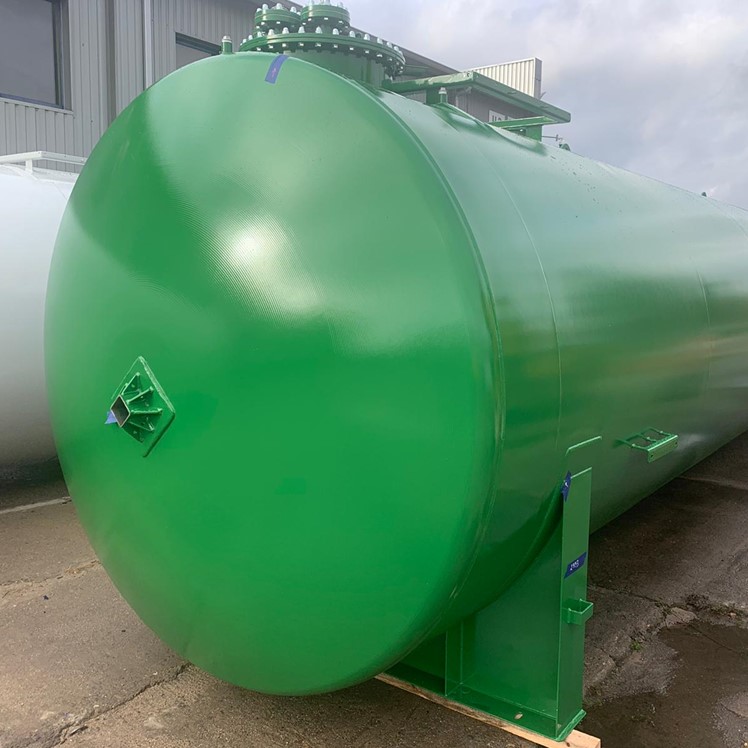
Tank construction according to German WHG conformity: What needs to be considered?
WHG tanks for substances hazardous to water: What must be observed?
The German Water Resources Act (WHG) is a central set of regulations in Germany that governs the handling of substances hazardous to water. These substances can cause considerable environmental damage if they are not stored or transported in accordance with the legal requirements. Consequently, there are also strict regulations regarding the manufacture, installation and maintenance of tank systems in accordance with the WHG. WHG certification and compliance with WHG conformity play a central role here.
What does the Water Resources Act regulate?
The German Water Resources Act (WHG) was introduced to protect water bodies from pollution and to create the basis for sustainable water management. The handling of water-polluting liquids, which are divided into different water hazard classes, is particularly important:
- Water hazard class 1 (WGK 1) Low water-polluting substances that can only affect water bodies in small quantities.
- Water hazard class 2 (WGK 2): Substances that can damage water and require special precautions.
- Water hazard class 3 (WGK 3):Substances that are highly hazardous to water and can cause considerable environmental damage even in small quantities.
The classification into these classes determines which safety precautions and measures are required for the storage and transportation of the substances.
Approvals and certifications
A key aspect of tank construction in accordance with the WHG is compliance with strict approval and certification standards. These include, among other things:
- WHG approval:Tank builders can be certified by the competent authority as a specialist company in accordance with the WHG and thus be authorized to manufacture WHG tanks.
- DIN and EN standards:All tanks must comply with the relevant DIN and EN standards, such as DIN 6616 for cylindrical tanks made of sheet steel or EN 12285 for underground tanks. These standards guarantee mechanical stability and resistance to chemical influences.
In consultation with the responsible supervisory authority (TÜV), a tank design can also be implemented on the basis of an alternative set of regulations in order to produce a tank equivalent to the WHG regulations. In this case, production in accordance with the Pressure Equipment Directive (PED) is recommended, which also places high demands on the safety level of the system.
In addition to the type plate, a specialist company can also affix a so-called Ü-Zeichen (conformity mark) to the container. The Ü-Zeichen is proof that the container or the design has been manufactured in accordance with the recognized rules of technology and meets the legal requirements.
Types of WHG tanks
A variety of designs can generally be realized in compliance with WHG. The most common designs can be summarized as follows:
- Single-walled above-ground storage tanks (horizontal) according to DIN EN 12285-1 (DIN6616-1).
- Double-walled above-ground storage tanks (horizontal) in accordance with DIN6616/2 (DIN6616-2)
- Double-walled underground storage tanks (horizontal) in accordance with EN 12285-1 (DIN6608)
- Single-walled above-ground storage tanks (upright), based on the former DIN6618-1 standard
- Double-walled above-ground storage tanks (upright), based on the former DIN6618-2 standard
The exact requirements and permissible designs may vary depending on the federal state and specific application, so it is important to observe the relevant local regulations and guidelines.
Technical features of WHG tanks
WHG tanks have various safety features to prevent leaks and environmental damage as far as possible. This can include the following special features, for example:
- Leak detection systems:Low water-polluting substances that can only affect water bodies in small quantities.
- Overfill prevention devices: These technical devices prevent the tank from overflowing and minimize the risk of contamination.
- Venting devices:Venting systems are necessary to compensate for pressure differences and ensure safe filling and emptying.
- Double-walled construction: WHG-compliant containers are often double-walled to provide an additional protective barrier in the event of a leak. This double-walled construction prevents hazardous liquids from escaping into the environment.
- Sump trays:Drip tray as a substructure to collect escaping liquids and prevent contamination of the floor.
- Reinforcements: The containers are fitted with internal reinforcements to increase structural integrity and stability.
- Periodic inspections:The tanks must be inspected by a recognized expert at least every five years.
The production of WHG-compliant tanks requires a high level of technical expertise and strict compliance with legal regulations from a tank manufacturer. The fulfillment of these requirements contributes significantly to the safe storage of water-polluting substances.
